Early Winter Walk
 Saturday, December 13, 2014 at 8:00PM
Saturday, December 13, 2014 at 8:00PM Autumn has passed. Skeletal remains of leaves are everywhere, lots of crinkly brown shells upon the ground and others still clinging to trees. 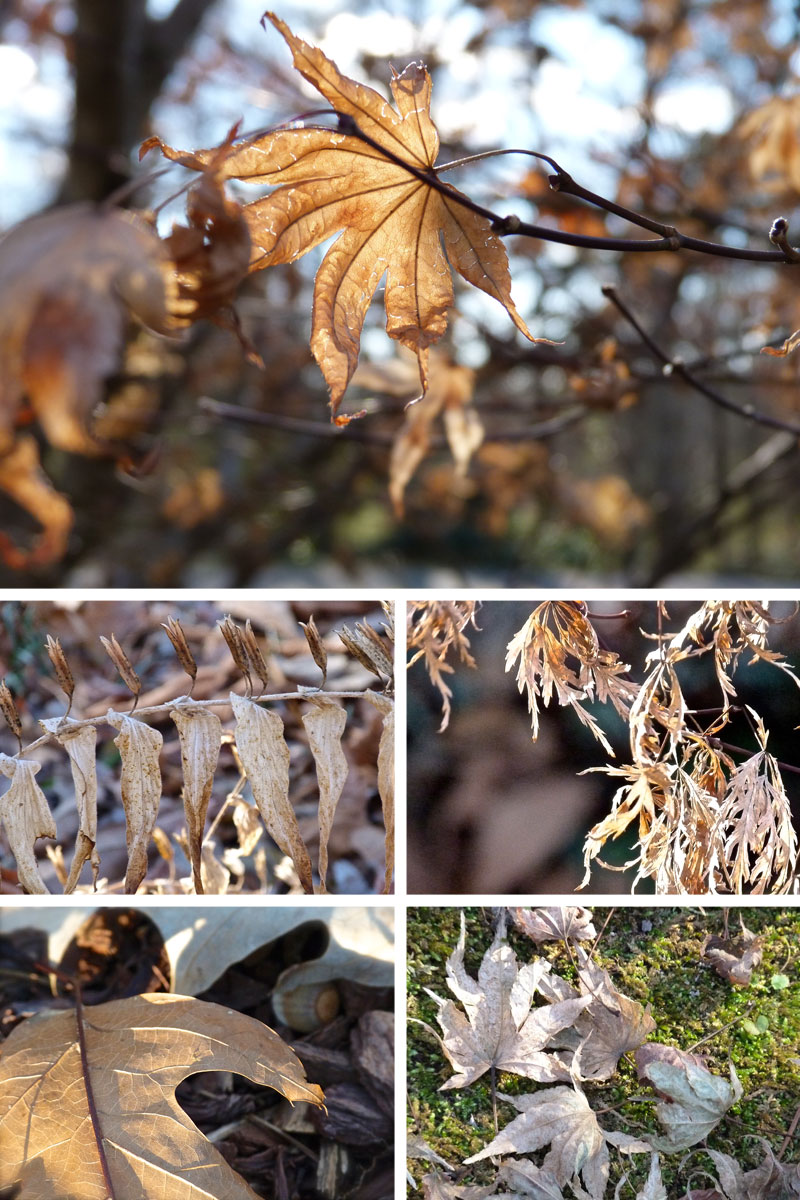
I find a single oakleaf hydrangea leaf that still has its fall color. It is the last one, as far as I can see.
I appreciate the Spartan beauty of winter, especially on a pleasantly crisp day with a brilliant blue sky. I walk out on the patio and hear the call of two red tail hawks, soaring high overhead. I breathe in the air and smell the tea olives down in the arbor garden, their blooms tiny and obscure but with a wonderful fragrance that carries on the breeze. I realize this is a perfect day for an early winter walk, so I hurry back inside for my camera.
Back outside, I point my camera at some bright dogwood berries with the cerulean sky above them.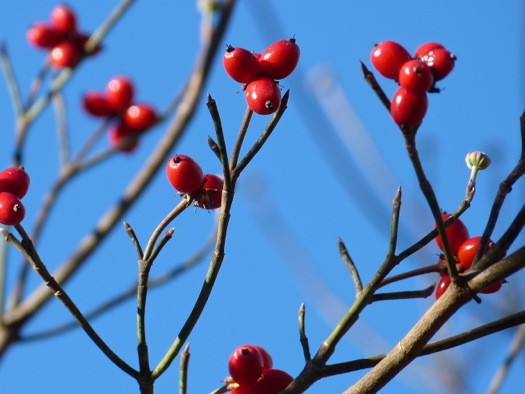
I walk a little farther and take a shot across the front lawn, a view stripped now almost to its essentials. Many dried Japanese maple leaves hold desperately to branches, but other trees are bare: 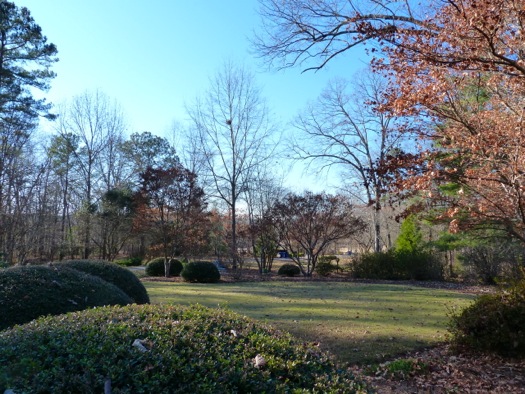
Evergreens stand out and provide structure and color to the December garden. Below is a small sampling:  Clockwise from top left: Rosemary; Deodar Cedar 'Feelin' Blue'; Japanese Cedar; Cryptomeria japonica.
Clockwise from top left: Rosemary; Deodar Cedar 'Feelin' Blue'; Japanese Cedar; Cryptomeria japonica.
A group of evergreen Nandina 'Firepower' grows next to the front parking court. These sterile nandinas provide a lot of color through the winter:
Another evergreen with winter interest is Pieris japonica 'Cavatine', laden with buds that will open next spring: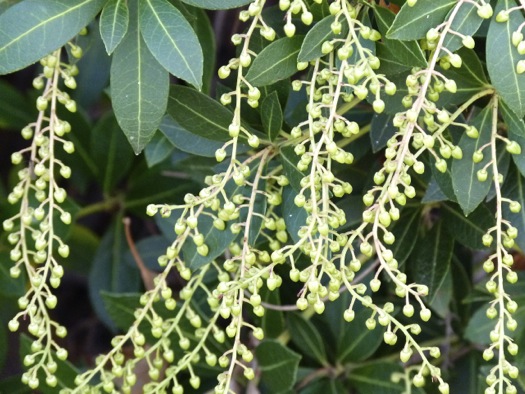
I walk along a path that leads to the arbor garden. I recently planted several Winterberry hollies next to this path. 'Winter Gold' is filled with golden berries that the birds will soon consume:
The bark of a large oak tree catches my attention. Moss highlights the bark's lattice pattern:
Near the oak I spy some acorn shells:
Edgeworthia is a deciduous shrub with wonderful structure, cinnamon-colored bark and outstanding buds that will open in late winter:
Eventually I wander over to the woodland garden, where fallen leaves are thick upon the ground. Lou works hard to keep the paths cleared, but the leaves come quickly behind him. In places the path is nearly obscured. I have been out for a while now, and it is late in the day. Long shadows stretch across the land.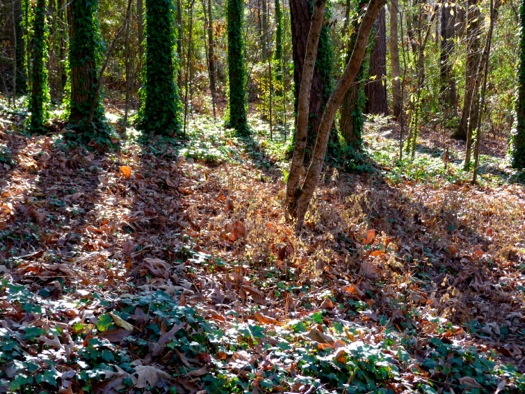
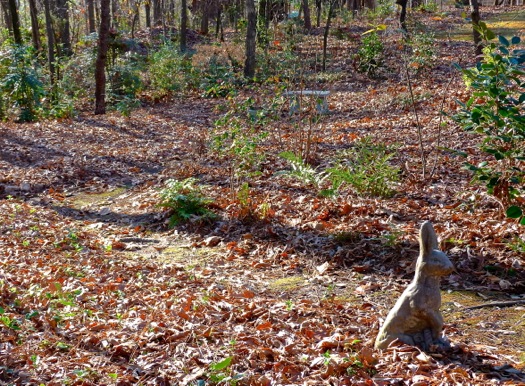

I realize the sun is beginning to go down, and the air is suddenly cold. The days are so much shorter now. I pause to take one last photo, this one of the jasmine arch, lit up for Christmas. The light is just dim enough for the lights to be seen. 
I am content as I enter the house. A walk in the garden always refreshes my spirit, and it has given me unrushed time to reflect upon the Christmas season. Peace to you all! Deb

